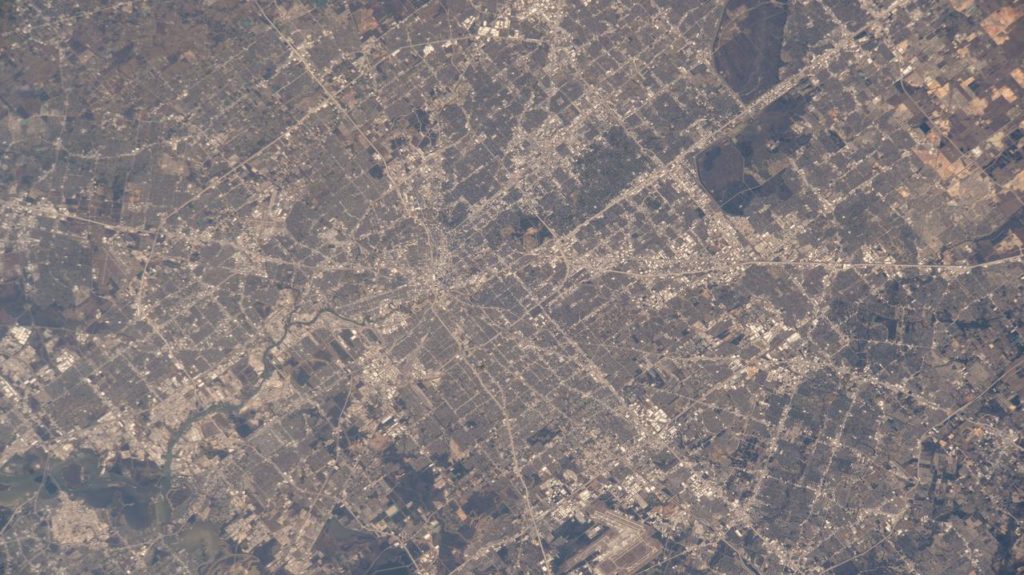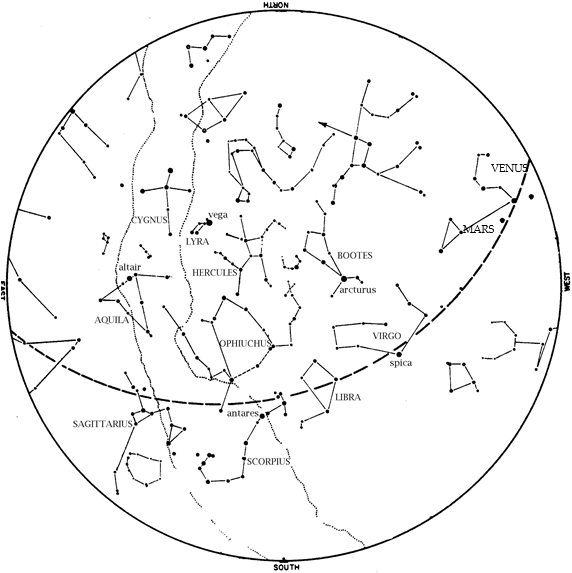Editor’s Note: We are looking up as HMNS Astronomer James Wooten explains the sky happenings for the month of July, Earth’s aphelion and the sweltering Texas heat.
Venus remains in the evening sky for one more month. It is high in the west at dusk as July begins. However you can watch as Venus appears slightly lower to the horizon each evening. By the end of the month, Venus will be hard to see, despite its brilliance, because it will set in very bright twilight. How long can you observe it?
Mars is in the west at dusk. As Earth continues to pull away from Mars, Mars is a little dimmer each evening. Venus and Mars appeared closest on July 1; they are slightly farther apart each night this month as we watch Venus return towards the Sun.
Saturn is in the morning sky this month; face south just before dawn.
Jupiter is in the morning sky this month. Look in the east as day breaks.

Spring stars are high in the south and west. A distinct backwards question mark shape outlines the mane and forepaws of Leo, the Lion. Three stars forming a right triangle are to its upper left; they mark Leo’s hindquarters. The Big Dipper is as high as it ever gets in the north at dusk. You can extend the curve of its handle to ‘arc to Arcturus’ and then ‘speed on to Spica’. These stars high in the east and south, respectively, by dusk tonight. Arcturus, by the way, is the fourth brightest star we ever see at night, but the brightest one Americans ever see in all of July.
In the east, look for the enormous Summer Triangle, consisting of the stars Deneb, Vega, and Altair. This triangle is up all night long in July, hence its name. Scorpius, the Scorpion, is in the south at dusk. Sagittarius, the Archer, known for its ‘teapot’ asterism, is to Scorpius’ left.
Moon Phases in July 2023
Full July 3, 6:38 a.m.
Last Quarter July 9, 8:47 p.m.
New July 17, 1:31 p.m.
1st Quarter July 25, 5:06 p.m.

The Summer Triangle is high in the east. This consists of the brightest stars in Cygnus, Lyra, and Aquila. Scorpius, the Scorpion, is in the south, with the ‘teapot’ of Sagittarius to his left. Leo, the Lion, sets in the west. From the Big Dipper’s handle, ‘arc to Arcturus’ and ‘speed on to Spica’ in the southwest.
At 3:06 pm CDT on Thursday, July 6, the Earth is at aphelion, which means it is as far away from the Sun as it will get this year. But why has it been about 100 degrees in Texas lately if we’re slightly farther from the Sun? Bear in mind that Earth’s orbit is almost a perfect circle, with an eccentricity (out of roundness) of only 1.6%. This variation in the Earth-Sun distance is too small to affect our weather. Earth’s 23.44 degree tilt produces a much bigger effect. Our hemisphere is very much tilted towards the Sun in July, so we swelter in summer heat.
Our George Observatory is now open every Saturday night for observing! Purchase tickets in advance on our website.
Clear Skies!
Missed last month’s sky happenings? Check it out here.






